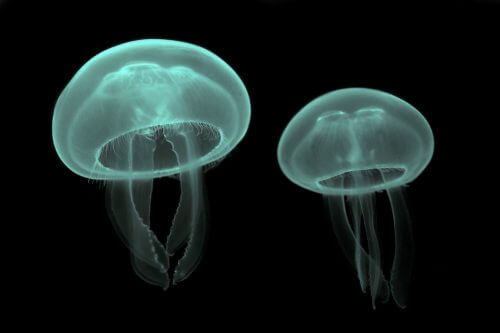Jellyfish, more than any other marine creature, benefit from utilizing the laws of physics to move through water with maximum efficiency

Josh Fishman, The article is published with the approval of Scientific American Israel and the Ort Israel network, 12.06.2016
Jellyfish are never inferior. Twenty-four hours a day, seven days a week, they move through the water in search of foodBradford J. Gimmel, a marine biologist at the University of South Florida. Gimmel and other researchers who were engaged in the study of moon jellyfish, a species of jellyfish whose scientific name is Aurelia blue (Aurelia aurita), found that the jellyfish manage to accomplish the task by creating areas of high pressure and low pressure around their bodies, which alternately pull and push them forward.
In the past, scientists believed that jellyfish move so easily because they are light: they contain mostly water. But water also has mass, and this mass needs to be moved. In an attempt to understand exactly how this happens, Gimel, the engineer John Dabiry from Stanford University and their colleagues studied the issue closely. They placed a jellyfish in a tank of water and dropped tiny glass beads into it. To track the beads they illuminated them with laser beams and photographed them at high speed. In this way the water pressure and speed became visible.
When the jellyfish contracted its bell, the large dome that makes up most of its body volume, it created a relatively low pressure area outside the bell, and a higher pressure area inside. As objects move from an area of high pressure to an area of low pressure, the moon jellyfish is pushed forward. This is what the scientists reported In the article who published in the November 2015 issue of Nature Communications.
At this point the researchers are in for a surprise. When the jellyfish loosened the edge of the bell and let it expand downward, a high pressure area formed beneath the jellyfish, and the water rose and penetrated the bell. "Thus the jellyfish was jumped forward one more time, even though it was actually in a state of relaxation of effort," says Gimel. In order to move in this way, the jellyfish must alternately contract and release the rim of the bell, up and down. Jellyfish have muscles, but most surround the bell like a bunch of rubber bands. This set of muscles is mainly effective in the contraction movement. But recently Richard Satterley, a biologist at the University of North Carolina at Wilmington, discovered other muscles on the bell's edge, which protrude at outward angles. These muscle fibers allow the jellyfish to bend the bell rim to propel the water around it, greatly optimizing its swimming.
good to know
Watch engineer John Dabiri explain how jellyfish serve as a source of inspiration in submarine design:
About the writers
Josh Fishman - Senior editor at Scientific American dealing with biology, chemistry and earth sciences. He wrote and edited articles on science and medicine in the magazines Discover, Science, Earth and US News.
for further reading
- Jellyfish in motion, an animation showing the high pressure areas pushing the luggage forward.
